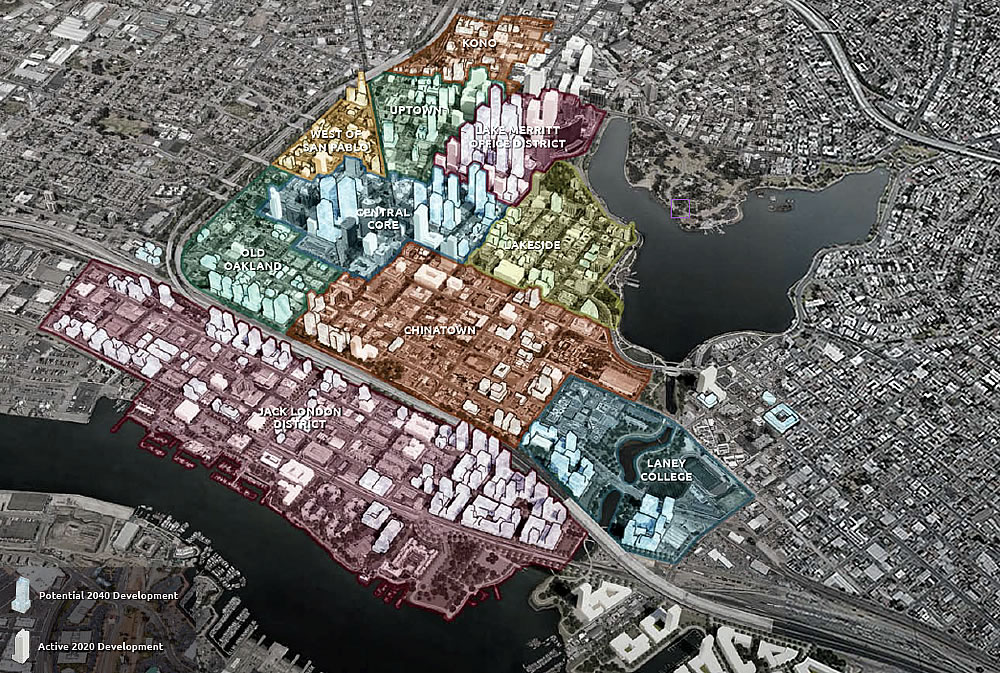Having held in March and April, the weighted average asking rent for an apartment in Oakland ticked up one (1) percent in May to $2,475 a month.
As such, while the average asking rent in Oakland is now 8 percent higher than it was at the same time last year, it is still 8 percent lower than prior to the pandemic and 17 percent below its 2016-era peak, with listing activity having dropped 35 percent over the past year but still over 60 percent higher than prior to the pandemic (at which point the average asking rent in Oakland was $200 lower than today).
At the same time, the relative discount in asking rents between Oakland and San Francisco, which was averaging 47 percent prior to the pandemic but dropped to 35 percent in March of last year, has ticked back up to 42 percent, driven by the relative rebound in San Francisco.

There are lots of cranes in Oakland – presaging a surge in new residential units in the next few years. Add in projects set to break and a healthy demand/supply balance may be in the offing.
Speaking of projects set to break ground, Grosvenor just announced it has acquired an entitlement put on the market in late 2021 at 2600 Telegraph Ave. in Oakland’s Koreatown Northgate neighborhood. It plans to break ground on the 225-unit development by year’s end. Additionally, it has a 19-story residential development under construction not that far away in Berkeley. The company is very bullish on Oakland multi-family development and is looking for new projects there.
Housing units have a finite life span before they need to be replaced. Say 50 years. Oakland has about 150,000 units. So 2% of that is 3,000 new units per year every year just to stay even with where it’s at now.
I do some rental unit renovation work. Mid market segment. Lower Rockridge. Most of the WWII stock is crap. Quickly and cheaply built. I’m always amazed at how dilapidated the existing housing stock is. Oakland needs to be building 6,000 units per year if it actually wants to see the quality improve.
Actually isn’t most of the housing in Oakland pre-WWII ??? (or SF, or Berkeley…Hell even Piedmont) Which would make it 80+ years old…and somewhat call-into-question your lifespan theory.
Suggest that SOME old housing is nice and SOME old housing is crap. Some old buildings were built well, and some were built cheaply. It’s not all the same.
These numbers sound way off to me. Would love to see a source for this. For every 120 year old Victorian, you’re saying there’s a housing unit thats demolished after 20 years? No way.